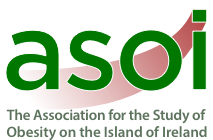The gut microbiome modulates associations between adherence to a Mediterranean-style diet, abdominal adiposity, and C-reactive protein in population-level analysis
- Categories: Microbiome
Type Article
Authors
Jennings A, Kühn T, Bondonno NP, Waniek S, Bang C, Franke A, Kassubek J, Müller HP, Both M, Weber KS, Lieb W, Cassidy A.
Year of publication
2024
Publication/Journal
Am J Clin Nutr
Volume
119
Issue
1
Pages
136-144
Abstract
Background: Adherence to a Mediterranean-style dietary pattern is likely to have variable effects on body composition, but the impact of gut microbiome on this relationship is unknown. Objectives: To examine the potential mediating effect of the gut microbiome on the associations between Alternate Mediterranean Diet (aMed) scores, abdominal adiposity, and inflammation in population-level analysis. Design: In a community-based sample aged 25 to 83 y (n = 620; 41% female) from Northern Germany, we assessed the role of the gut microbiome, sequenced from 16S rRNA genes, on the associations between aMed scores, estimated using validated food-frequency questionnaires, magnetic resonance imaging-determined visceral (VAT) and subcutaneous (SAT) adipose tissue and C-reactive protein (CRP). Results: Higher aMed scores were associated with lower SAT (-0.86 L (95% CI: -1.56, -0.17), P = 0.01), VAT (-0.65 L (95% CI: -1.03,-0.27), P = 0.01) and CRP concentrations (-0.35 mg/L; β: -20.1% (95% CI: 35.5, -1.09), P = 0.04) in the highest versus lowest tertile after multivariate adjustment. Of the taxa significantly associated with aMed scores, higher abundance of Porphyromonadaceae mediated 11.6%, 9.3%, and 8.7% of the associations with lower SAT, VAT, and CRP, respectively. Conversely, a lower abundance of Peptostreptococcaceae mediated 13.1% and 18.2% of the association with SAT and CRP levels. Of the individual components of the aMed score, moderate alcohol intake was associated with lower VAT (-0.2 (95% CI: -0.4, -0.1), P =0.01) with a higher abundance of Oxalobacteraceae and lower abundance of Burkholderiaceae explaining 8.3% and 9.6% of this association, respectively. Conclusion: These novel data suggest that abundance of specific taxa in the Porphyromonadaceae and Peptostreptococcaceae families may contribute to the association between aMed scores, lower abdominal adipose tissue, and inflammation.
